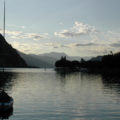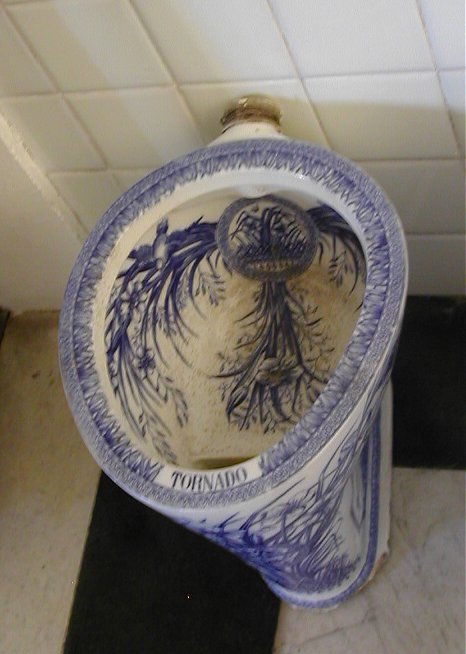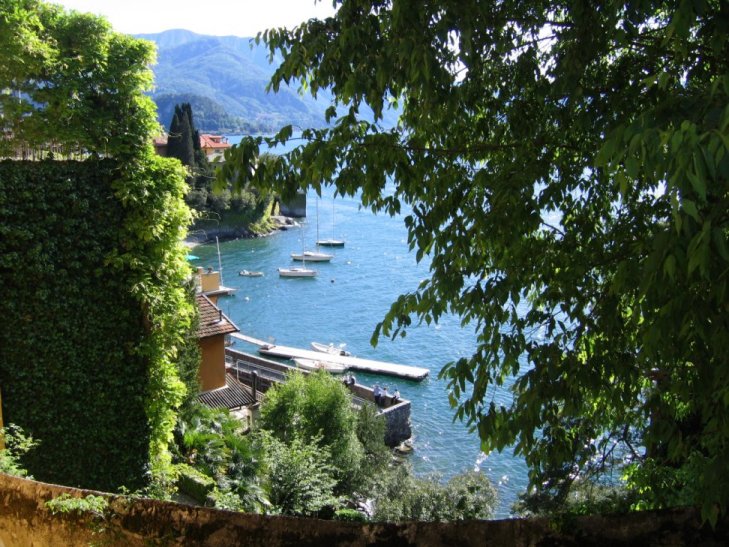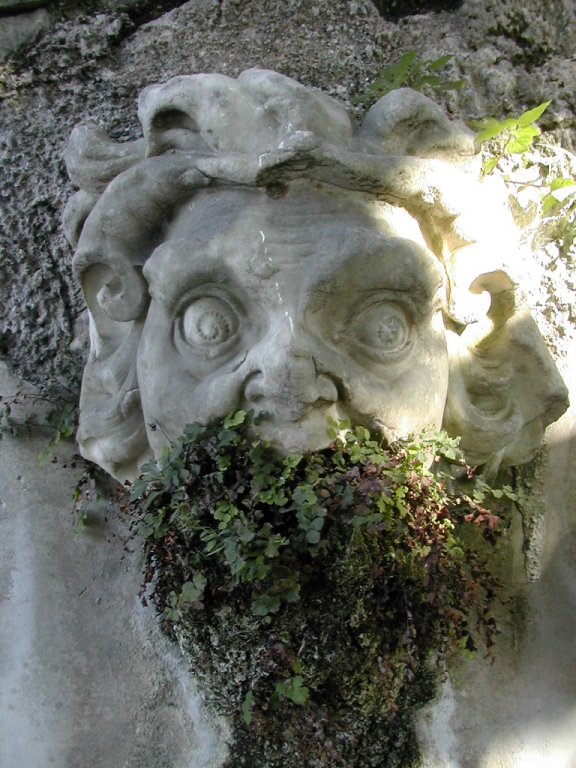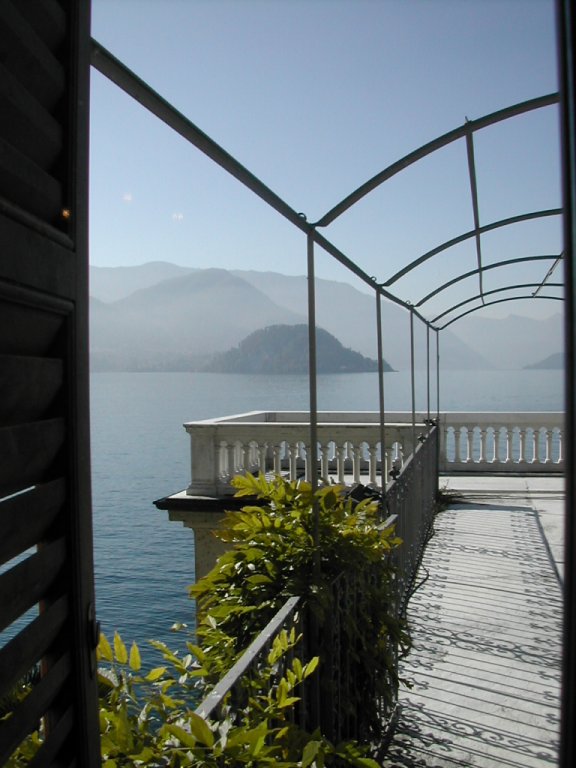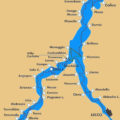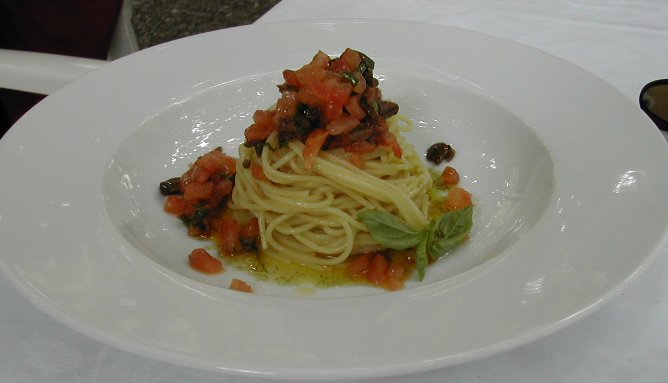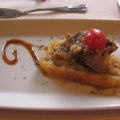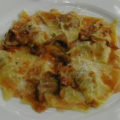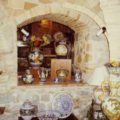^ Premana, December 2003
A great deal of ink has been expended on the glories of Italy in the summertime. Many tourists never see Italy’s winter, which has its own beauties.
This year, it looks as if we’re in for a severe winter (by Italian standards). The higher peaks we can see from our house were not snow-capped by November 1st as they had been the previous two years: “Ognissanti, neve sui canti” goes a local saying – “By All Saints’ Day (Nov 1), snow on the peaks.” Snow began falling Nov 25th, and went on through the 26th, then again the following weekend (considerably reducing the guest list for our dinner party on Dec 3rd). It’s been clear and bitter cold (freezing or below) since, and the forecast is for even colder; I have put on my nice warm Ugg boots and will not be removing them until April!
Most of the snow at lower elevations has melted in the sunshine, but as my train passes through the farmland between Lecco and Milan, the fields and trees are heavily frosted, where thick fog has turned to ice.
Christmas lights and decorations are already up. I put up some strings of white lights as soon as daylight savings went off, to counter the depression of long, dark nights; everyone else seems to have the same instinct. Colored lights are beginning to appear on trees in people’s yards, and this year’s decorative innovation is Santa Claus dolls dangling on ladders from balconies and windows – trying desperately to deliver gifts, one supposes.
The natural world is winding down; my nasturtiums and morning glory vines have frozen and then thawed into soggy messes – although, weirdly, the daffodils are already sprouting leaves. Many Italian gardens contain persimmon trees (cachi – pronounced KAH-ki), which by now have lost all their leaves, so the round, bright orange fruit stands out sharply against the dark brown branches. The problem withcachi, even if you like them (I don’t), is that they ripen pretty much all at once, so for a few weeks everybody who has a tree is drowning in fruit and trying to give it away to everybody else.
It’s time for winter fruits and vegetables: apples, pears, broccoli, artichokes, pumpkin. For my Indian dinner last weekend I experimented with pumpkin samosas, and they were such a big hit that I’ll have to make them again soon.
In our neighborhood, a clear winter day offers the best views of Lake Como and the surrounding mountains, minus the haze that impedes visibility in summer. My digital camera broke back in October, which is very frustrating now that we’re in the best time of year for photographing.
Dec 5th was the feast of San Nicolo’, patron saint of Lecco; the 7th was the feast of Sant’Ambrogio (Ambrose), patron of Milan, and the 8th the Feast of the Immaculate Conception. Public schools in Lecco gave a three-day holiday in the middle of the week, Milanese schools (and many businesses) are off from the 7th through 11th. Ross’ private school is officially closed only for San Nicolo and the Immacolata, but they’re not bothering much with lessons on the other days because so many kids have gone off skiing for the whole week.
As for me, I’ve been working, since I’ll be taking days off later in the month to go to London for a Woodstock alumni gathering, and then Dec 26th I leave for Arkansas, Austin, and Las Vegas (Vegas for the Consumer Electronics Show again, and this year I have to play booth bunny. I’m more or less looking forward to it, but know it will be shatteringly hard work).
In between, we’ll celebrate Christmas at home with our friends Ravil and Amanda – quite a change from last year when, for the first time ever, we had both sides of the family present. However, as Ravil says, we can be loud enough to make up for this year’s slimmer numbers. Especially him and Amanda, who are opera singers.

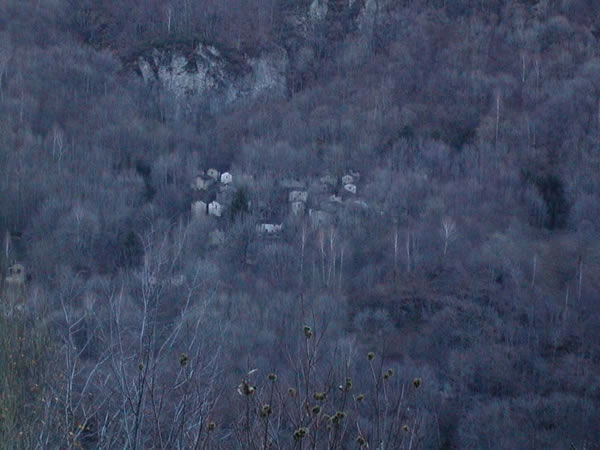


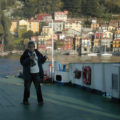
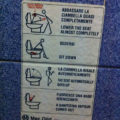
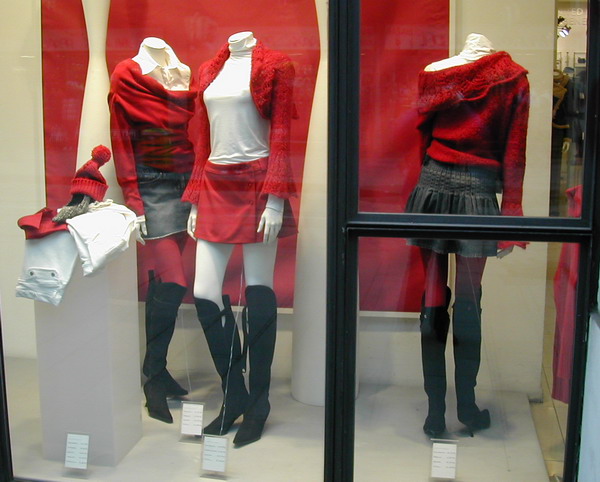

 <
<
 <
<




